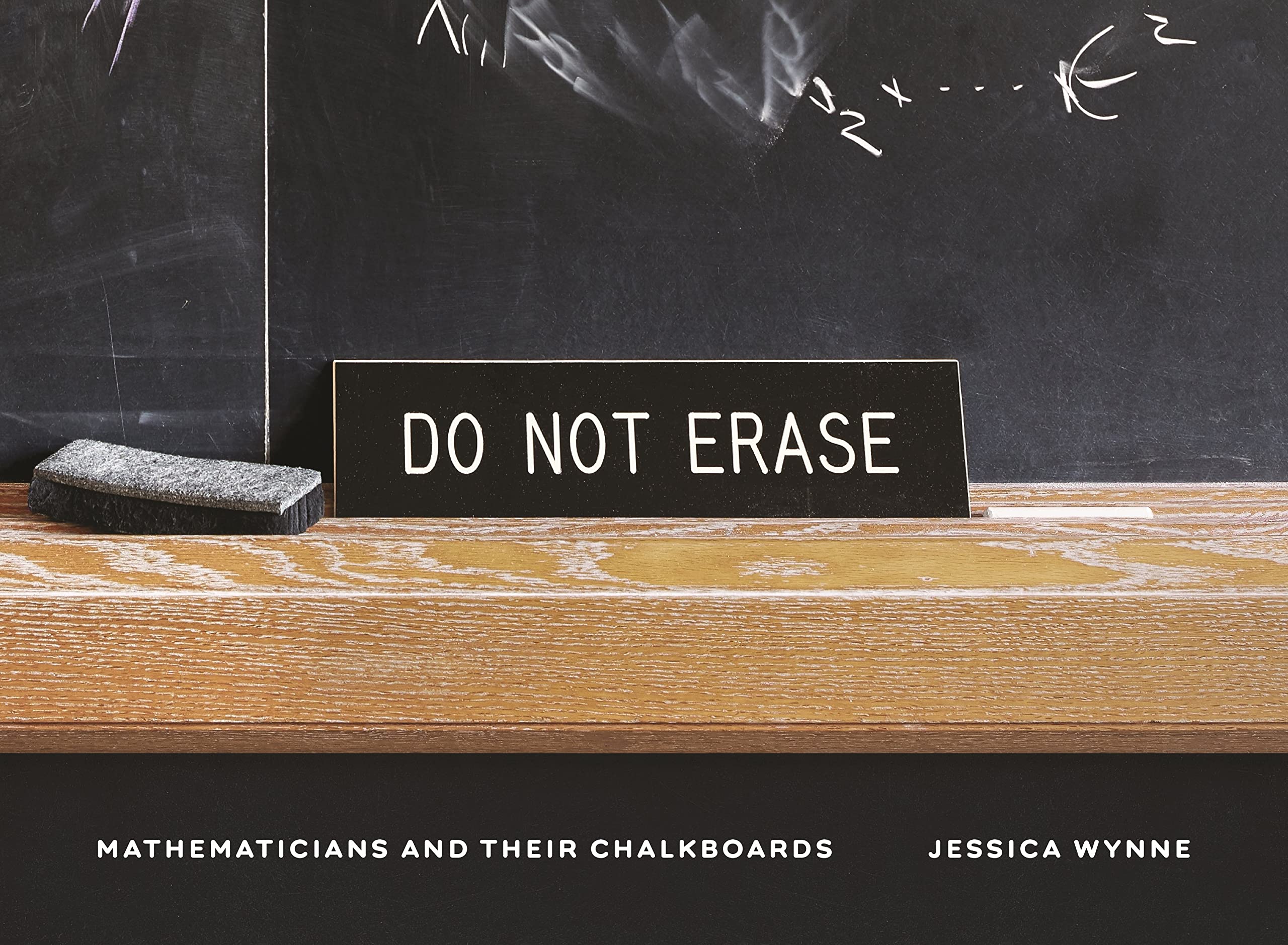
This book exhibits an art that is small but that is very important to many of us: the handwritten work of mathematicians.
The author introduces the project by describing some friends, “Amie and Benson are theoretical or ‘pure’ mathematicians … One day on the Cape, I watch Benson work at his dining room table. … For several hours, he sits, thinking, creating, jotting down the occasional note. It looks like he has a secret. … I feel like he is creating something so expansive and beautiful it is beyond words, something that exists only in his head. When I ask him to explain what he is working on, he pauses, appears to struggle for the right words, and replies, simply, ‘No. I can’t.’ ”
Later the author also says, “I have always used my camera as a way to understand and explore the world.” So while this book is subtitled Mathematicians and their chalkboards, another good way to understand it is: glimpses into the works of mathematicians through their chalkboards.
This is a coffee table book. It is beautiful, with typography that is understated yet powerful. It is not coffee table-sized but it has the same feel in that you shouldn’t read it, you should browse it. Open it anywhere and you see a two-page spread about one mathematician. Most are research mathematicians, although a few do not fit that description perfectly. Even-numbered pages have a brief biography and an essay by that mathematician reflecting on their work. They write about their perception of beauty, or perhaps a bit about their career and what drew them in the direction that they went. It is not the usual thing for mathematicians to put in writing.
Odd-numbered pages show that person’s chalkboard. Each picture is different than the others and all are visually interesting.
These are not necessarily candid shots. The author says, “I ask the mathematicians to write or draw whatever they want on their boards. (Often I end up shooting whatever is already on the board—usually something they are currently working on.)” So the subject had the option to put on the board what they want to share. That’s wise, if only because for instance my board would contain a grocery list, along with some passwords.
Some boards are messy, some are spare. Some are covered with formulas, while others focus on a figure or two.
I’ll take Gilbert Strang as an example. There is a five-sentence biography and his essay focuses on what he is most popularly famous for, his lectures and book on Linear Algebra. His blackboard is taken straight from that class, with matrices and matrix equations hard at work.
The author asserts, “Despite technological advances (such as the creation of computers), chalk on a board is still how most mathematicians choose to work. As musicians fall in love with their instruments, mathematicians fall in love with their boards—the shape, the texture, the quality of the special Japanese Hagoromo chalk.” While I don’t know that this is completely true, since plenty of people prefer whiteboards, or paper, or tablets, perhaps it doesn’t matter. Certainly chalk gives the pictures a theme. Certainly also many of us agree with Sun-Yung Alice Chang who says, “Despite the computer age we live in, the type of talks I enjoy the most are still those in which the speaker writes on the blackboard line by line and explains his or her thoughts.”
There are many books about mathematics filled with beautiful graphics. Searching for phrases such as ‘mathematics art’ or ‘mathematics beauty’ will produce a list. They often have lots of drawings done with computers, such as fractals, and these can be stunning as well as fascinating. However, as with really high-end natural science illustrations, often somehow the hand-crafted ones are more compelling and show better what it is that the viewer needs to see.
This book also fits with another tradition, ones that reflect on a life in mathematics. Many of these are biographies but there are some that like this one touch on a number of mathematicians, sampling broadly rather than deeply. Two familiar and excellent ones of this type are Mathematical People and More Mathematical People. One that is recent enough that some readers may not yet have seen it is Mathematicians: An Outer View of the Inner World, published by the AMS in 2018.
Alec Wilkinson’s afterword is a powerful meditation, “These photographs … typify the mathematician’s historic engagement with beauty.” Strictly speaking this book doesn’t have to do with TeX—for instance, there is no mathematical typography in the typeset material—but it is about conveying mathematics and about beauty. He closes by saying, “Each of these elegant photographs preserves a detail in the canvas of rigorous human thought.”
Do Not Erase is an excellent choice as a gift for a budding mathematician, to communicate what the life of a mathematician is like, especially that of a researcher. For the same reason it is also a great choice for either an institutional or departmental library. The striking beauty draws the reader in and the essays hold them.